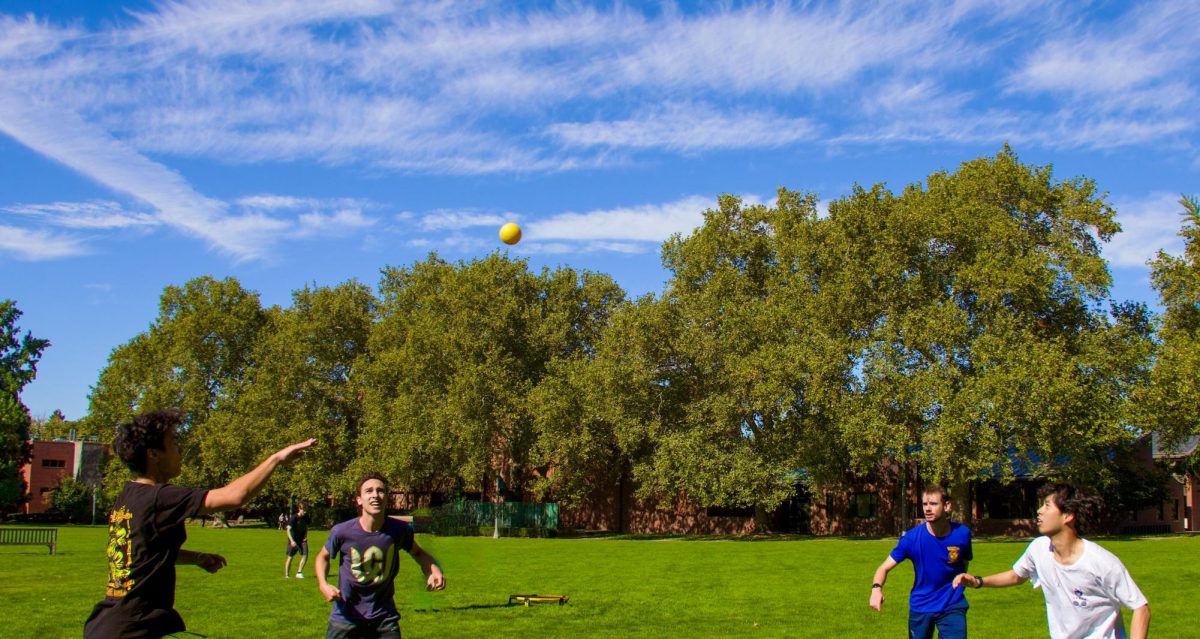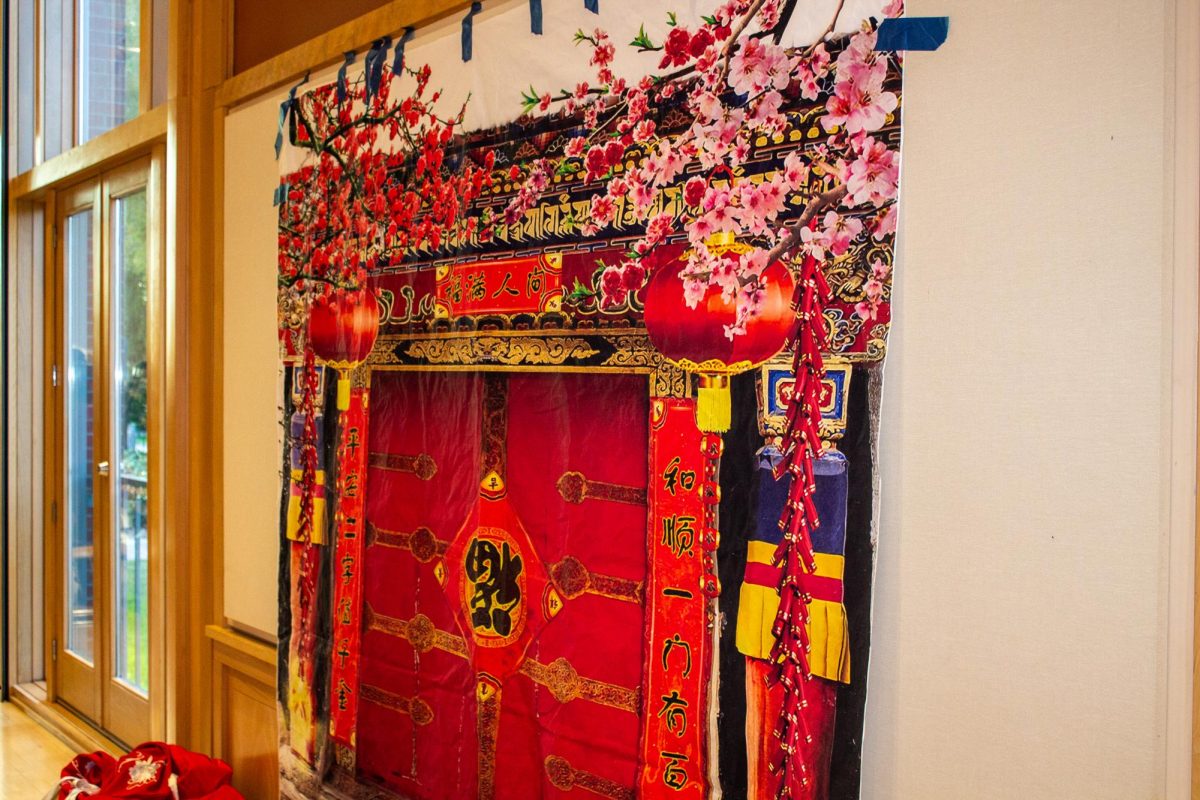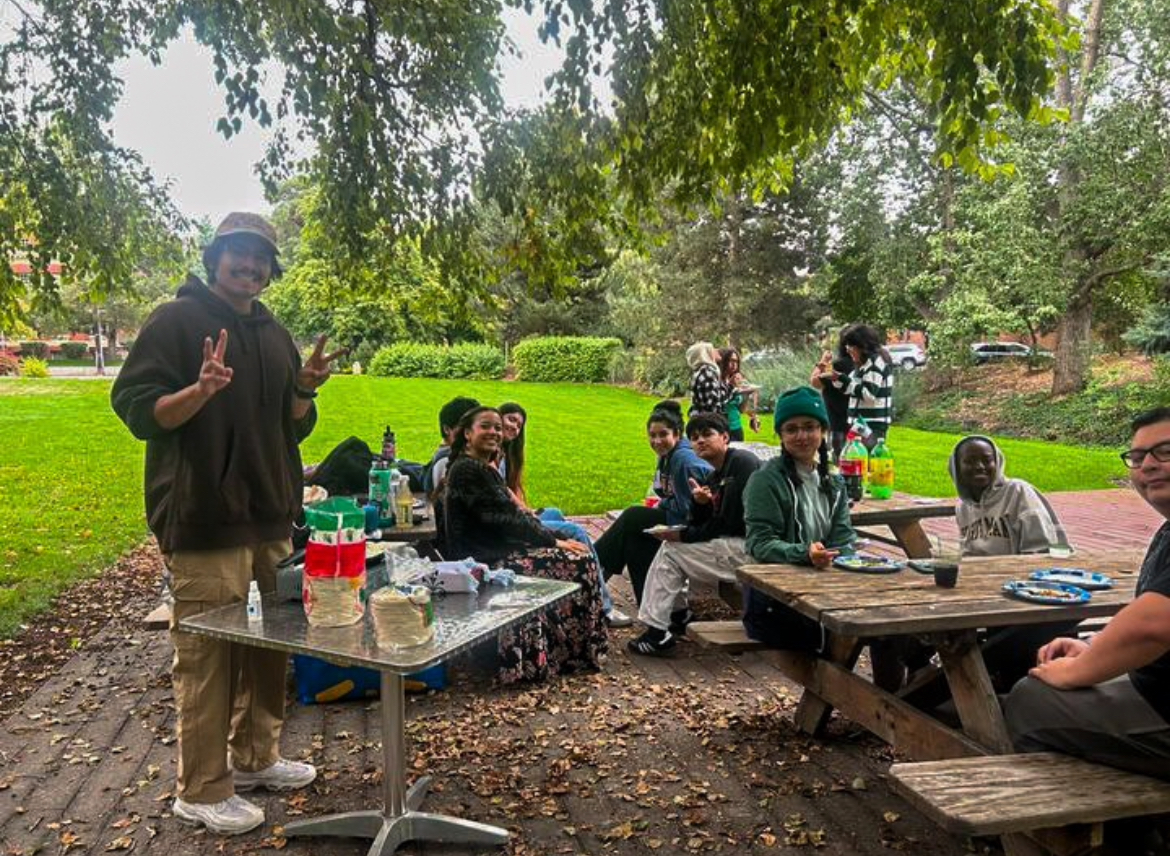Timber Culture, a traveling exhibit from the Maxville Heritage and Interpretive Center (MHIC) in Joseph, Oregon, is currently on display in the Maxey Museum. The exhibit features historic photographs of African American loggers in the Maxville work camp, abandoned today but revived by Executive Director of the MHIC, Gwendolyn Trice. For Trice, Timber Culture represents a personal history as well as a local history. Trice’s father and grandfather traveled in a boxcar amidst the cross-continental movement of the Great Migration and worked in the Maxville logging camp during Oregon’s timber boom.
This tidbit of history was lost when the camp was abandoned and Trice’s own family left it in the past. It wasn’t until Trice dug through historic photographs like the ones on display in Timber Culture that she revived her family’s past and Oregon state history.
“I didn’t have any idea that my dad was a logger until 2003, my dad had passed away by then. He was my catalyst for understanding the work, but it was my recognizing and realizing that this history existed that compelled me to sell my home in Seattle and move back home to tell a more inclusive narrative around the logging industry,” Trice said.
A personal connection sparked her interest in the Maxville site, but unearthing history and drawing public attention to African American loggers inspired Trice to create the MHIC.
As a kid, Trice says she imagined logging camps through the teachings on Paul Bunyan, whose cartoonish presence offered just one image of the American West and the logging culture within it. As Trice’s research took off and they founded the Maxville Heritage and Interpretive Center, though, her idea about what camps like Maxville looked like shifted.
“[Oregon logging companies] brought, and they recruited. Black people didn’t just say ‘let’s go to Oregon’ and find out what’s happening there.’ There were a lot of Black and Brown loggers that worked across the United States because we’re not an anomaly. We have been part of the logging culture for many years,” Trice said.
African American history in the Pacific Northwest is a subject that has, in the past, been unseen or excluded from public curricula.
Libby Miller, the Exhibitions and Collections Manager of the Maxey Museum, agrees with Trice on this point and worked with the MHIC to showcase Trice’s inclusive narrative. For Miller, collaborations like this one must meet a criterion of exploring local history and creating a space for important and relevant discussions or debate.
“[The exhibit] is very much in keeping with the Maxey Museum’s mission, which is to present regional, local and institutional history,” Miller said. “It’s a historical museum but with a fairly narrow focus most of the time, so I try to bring exhibitions that share a dual purpose of telling a certain history but also using that historical record to talk about current debates.”
Like Trice, Miller hopes to showcase aspects of regional history that exist outside of widely accepted narratives about the Northwest and saw this exhibit as a way to do just that after hearing about her colleagues’ work with Trice and the MHIC.
“You hear a lot about the whiteness of the Pacific Northwest, the Inland Northwest, and while there is truth to that and it’s something that we need to be aware of and be critical of, that narrative sometimes stops us from seeing very real pieces of history and participation that sometimes remain invisible if we only use that lens to understand the history of the Northwest and the Inland Northwest,” Miller said.
Anna Stone, who worked with the MHIC last summer to create a zine for the centennial anniversary of the Maxville camp, echoed this idea and saw a call for volunteers on the MHIC’s Instagram page last summer as a way to get involved with local history.
“I’m from Portland, Oregon, and I’m always trying to learn a little bit more about Oregon state history or Black Oregon history, so I just thought ‘this is really interesting’ and when I saw on Instagram [the MHIC] was hosting a centennial event I was like ‘this sounds really great, I wonder if I can help out,’ so I reached out to them,” Stone said.
In addition to recording history with a zine, Stone also sought education on the state they call home. Similar to Trice, Stone was unaware that Black loggers contributed to the history of Oregon state, and existed in opposition to Oregon’s heavily segregated constitution when the state was admitted to the Union in 1859.
“There were really interesting photographs [at the centennial celebration] and I think that really captured my attention. I don’t think I’d ever seen pictures of Black loggers in Oregon,” Stone said.
For Stone and others collaborating with the MHIC, exhibits like Timber Culture offer a space to reconsider known histories and re-learn a broader picture of regional history as a whole. Open until May 4 in the Maxey Museum, Timber Culture offers photographs and frameworks for education on Black history in the Pacific and Inland Northwest.






